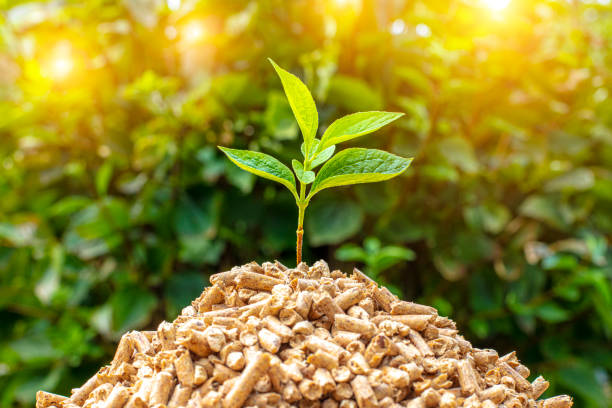Our Products
About Ecoeleven Biomass Pallets
- Discover Ecoeleven Biofuels premium Biomass pellet is a small, cylindrical, and condensed form of organic material derived from various renewable sources. These pellets serve as a viable and sustainable alternative to traditional fossil fuels and play a significant role in addressing energy and environmental challenges.
- This article provides an overview of biomass pellets, their production, applications, advantages, and environmental impact
- Our pellets deliver reliable heat and energy, promoting sustainability and efficiency across various industrial applications.

Production Biomass pellets are typically produced from a variety of organic materials, including wood, agricultural residues, energy crops, and even some types of waste. The production process involves several key steps.
- Feedstock Collection: The first step involves the collection of suitable feedstocks, which can include rice straw , rice husk, sugarcane bagasse, sugarcane leaf & stick, Napier bullet grass and other organic materials.
- Drying: To reduce the moisture content and improve combustion efficiency, the collected feedstock is dried to a specific moisture level.
- Size Reduction: The dried feedstock is then processed through chippers or grinders to achieve a uniform particle size.
- Palletisations: The processed material is compressed under high pressure through a pellet mill, resulting in the formation of cylindrical pellets. No binders or chemicals are usually added during this process, as the natural lignin content in the biomass acts as a binding agent.
- Cooling and Packaging: The newly formed pellets are cooled and then packaged for distribution and use.
Production Biomass pellets are typically produced from a variety of organic materials, including wood, agricultural residues, energy crops, and even some types of waste. The production process involves several key steps.
- Feedstock Collection: The first step involves the collection of suitable feedstocks, which can include rice straw , rice husk, sugarcane bagasse, sugarcane leaf & stick, Napier bullet grass and other organic materials.
- Space Heating: Pellet stoves and pellet boilers are popular choices for residential and commercial space heating due to their efficiency and low emissions.
- Industrial Processes: Some industries use biomass pellets as a source of heat for drying processes or as a supplementary fuel in manufacturing.
- Combined Heat and Power (CHP): In combined heat and power systems, biomass pellets are utilized to generate both electricity and useful heat simultaneously.
- Animal Bedding: In the agricultural sector, biomass pellets are used as bedding material for livestock, providing a comfortable and absorbent surface.
Production Biomass pellets are typically produced from a variety of organic materials, including wood, agricultural residues, energy crops, and even some types of waste. The production process involves several key steps.
- Renewable Energy Source: They are derived from renewable resources, making them a sustainable alternative to fossil fuels.
- Reduced Greenhouse Gas Emissions: Biomass pellets produce lower greenhouse gas emissions compared to fossil fuels, contributing to climate change mitigation.
- Waste Utilization: They can be made from agricultural residues and forestry byproducts, reducing waste and promoting resource efficiency.
- Energy Efficiency: Biomass pellet combustion is highly efficient, resulting in reduced energy consumption and cost savings.
- Energy Security: Using locally sourced biomass can enhance energy security by reducing dependence on imported fossil fuels.
Environmental Impact While biomass pellets have several environmental benefits, their production and use can also raise environmental concerns. These include:
- Land Use Change: Large-scale biomass production may lead to land use changes that can impact ecosystems and biodiversity.
- Air Quality: Improper combustion or low-quality pellets can emit particulate matter and other pollutants, affecting air quality
- Sustainable Sourcing: Sustainable forestry and agriculture practices are crucial to ensuring that biomass production remains environmentally friendly.
- Transportation Emissions: The transport of biomass feedstock over long distances can result in carbon emissions.
